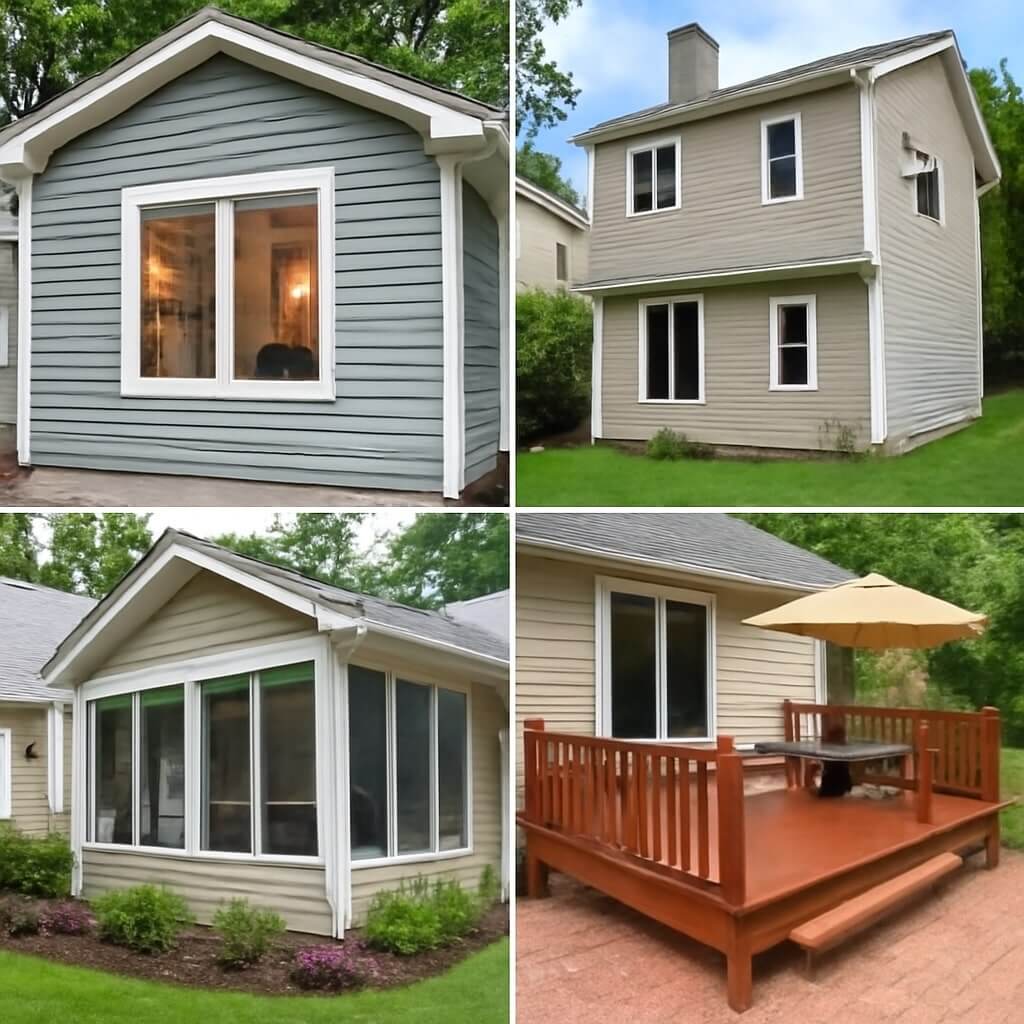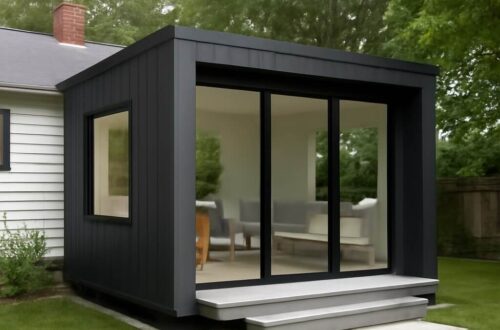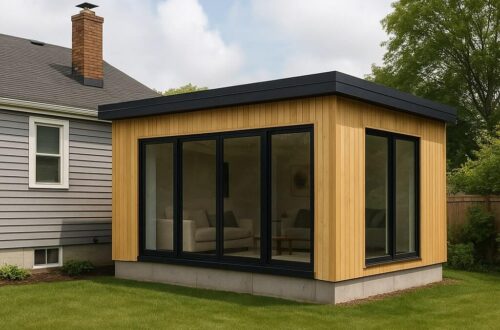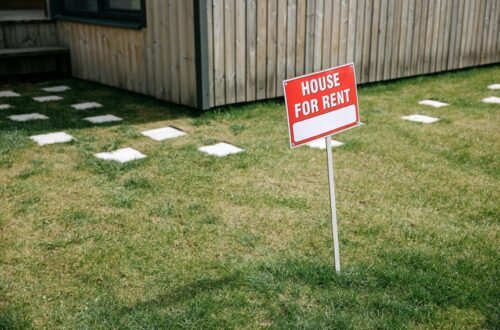Homeowners often look for ways to enhance their living spaces, and one of the most effective solutions is adding extra space through home additions. Whether you’re considering more living space for your growing family or want to add features to improve your home’s functionality, understanding the different types of home additions is essential. In this guide, we will explore the most common home additions, discuss their benefits, and help you determine which one is best suited to your needs.
Types of Home Additions
There are various types of home additions that cater to different lifestyles, preferences, and budgets. Below are the most popular types, each offering unique advantages.
1. Room Addition
Room additions are one of the most common types of home expansions. A room addition typically involves constructing an entirely new room to increase the overall square footage of your home. This type of addition can be used for a variety of purposes, including:
- Bedrooms – Perfect for families who need more sleeping space or want to convert a single bedroom into a master suite.
- Living Rooms – Ideal for those looking to expand their living area to entertain guests or spend time with family.
- Home Offices – With remote work becoming more common, adding a dedicated workspace can significantly improve productivity and home organization.
Pros:
- Increases living space for a variety of functions
- Can be customized to your needs
- Increases home value
Cons:
- Can be expensive, depending on the size and scope of the addition
- May require permits and inspections, which can add time and cost to the project
2. Second-Story Addition
A second-story addition involves adding a second floor to your existing home. This is a great way to expand your living space without taking up additional ground space, which can be especially valuable for homes with smaller yards.
Pros:
- Maximizes vertical space without using up yard area
- Great for expanding multiple rooms at once, like adding bedrooms, bathrooms, and living areas
- Adds significant value to your property
Cons:
- Expensive and complex due to structural changes needed
- May require reinforcing the foundation and roof structure
- Can take a long time to complete
3. Garage Addition
If you need more storage space or parking for additional vehicles, a garage addition can be a practical solution. Garage additions are versatile and can be designed as a standalone unit or attached to your existing home.
Pros:
- Provides additional storage and parking
- Can be converted into an extra room or living space in the future
- Lower cost compared to full home expansions
Cons:
- May not increase living space unless converted into a living area
- Requires adequate driveway space and permits for construction
4. Sunroom Addition
A sunroom, also known as a solarium, is an enclosed space typically made with large windows to let in plenty of natural light. It can serve as a relaxing area, a dining room, or even a home office.
Pros:
- Adds natural light and a feeling of openness
- Great for enjoying the outdoors without exposure to weather elements
- Less expensive than building a full room addition
Cons:
- May not be usable year-round in areas with extreme weather
- Not as private as other types of rooms
5. Basement Addition
Converting an unfinished basement into a livable space is another popular option for expanding your home. Basements can be transformed into additional bedrooms, living rooms, home theaters, or even rental units.
Pros:
- Makes use of unused space
- Adds significant square footage at a lower cost than other types of home additions
- Can be converted into a rental unit for passive income
Cons:
- Basement projects can face challenges like moisture, dampness, and low ceilings
- Requires proper insulation and waterproofing to ensure livability
6. Deck or Patio Addition
Decks and patios are outdoor home additions that create more space for recreation, dining, and entertainment. They can be made of wood, composite materials, or stone and can be designed to blend seamlessly with your existing home.
Pros:
- Provides outdoor space for relaxation and entertaining
- Less expensive than indoor room additions
- Can enhance the aesthetic appeal of your home
Cons:
- Seasonal in nature, with limited usability in colder climates
- Can require ongoing maintenance depending on the materials used
7. Bump-Out Addition
A bump-out is a smaller, less invasive type of addition that extends part of your home by just a few feet. This type of addition is usually used to expand a kitchen, bathroom, or living room without undertaking a full room addition.
Pros:
- Cost-effective compared to larger home additions
- Adds functional space without a major construction project
- Less disruption to your daily life during construction
Cons:
- Limited in scope and may not add as much value as larger expansions
- May not be suitable for all homes or locations
Factors to Consider Before Making a Home Addition
Before you start any home addition project, there are several key factors to consider:
- Budget: Home additions can be expensive, and costs can vary depending on the type and scope of the project. Set a realistic budget and ensure you have funds for unexpected expenses.
- Space Availability: Assess whether you have enough land for your desired addition, especially if you’re planning a room or garage addition.
- Permits and Zoning Laws: Some home additions require permits or zoning adjustments. Be sure to check local regulations to avoid legal issues.
- Return on Investment: Consider how much value your home addition will add to your property, especially if you plan to sell in the future.
- Impact on Lifestyle: Think about how the addition will impact your daily life. Will it make your home more comfortable, or will it create more space that you don’t need?
FAQ – Frequently Asked Questions
The cheapest types of home additions are typically sunrooms, decks, or bump-outs, as they don’t require as much structural change or space. They also tend to be more cost-effective than full room additions or second-story expansions.
The timeline for completing a home addition depends on the complexity of the project. A simple bump-out or sunroom may take a few weeks, while a full room or second-story addition can take several months.
While it’s possible for DIY enthusiasts to take on smaller home addition projects like a deck or sunroom, larger projects such as room additions or second-story expansions typically require professional expertise. Hiring a contractor ensures that your addition is safe, meets building codes, and is completed correctly.
The value a home addition adds depends on the type of addition and the current market. Room additions, second-story expansions, and garage additions typically yield a high return on investment, but sunrooms and outdoor spaces may offer a lower return. Always consult a real estate expert to understand the potential value increase.
Conclusion
Choosing the right home addition depends on your goals, budget, and available space. Whether you’re adding extra rooms for your growing family or creating a peaceful retreat, there’s a type of addition that can meet your needs. Remember to consider factors like cost, return on investment, and lifestyle impact before beginning your project. With the right planning and professional help, you can enhance your living space and enjoy the benefits of your new addition for years to come.






